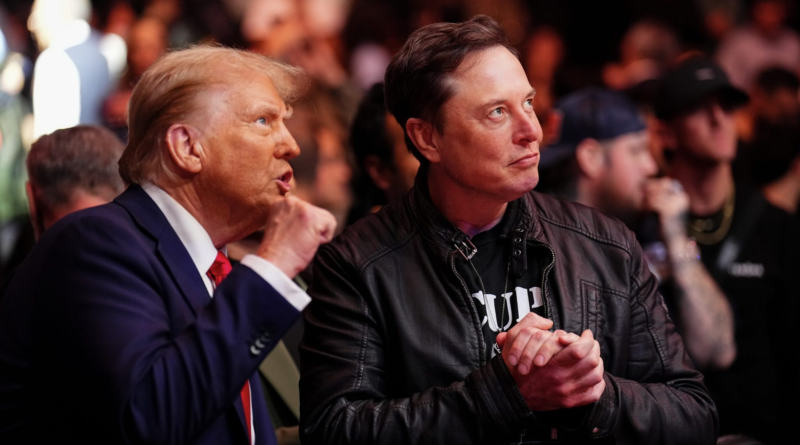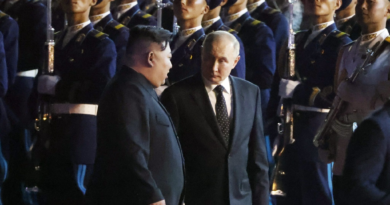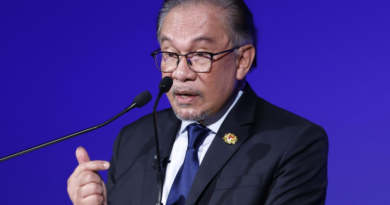Elon Musk’s first order of business in Trump’s administration: Kill remote work
Donald Trump appointee Elon Musk unveiled his first blueprint to radically shrink the federal bureaucracy, which includes a strict return-to-office mandate. This, he says, would save taxpayers hundreds of billions of dollars a year, if not more.
Together with partner Vivek Ramaswamy, the duo is set to lead a taskforce Musk has called the “Department of Government Efficiency”, or DOGE, after his favorite cryptocurrency. They have three main goals: eliminating regulations wherever possible, gutting a workforce no longer needed to enforce said red tape, and driving productivity to prevent needless waste.
“With a decisive electoral mandate and a 6-3 conservative majority on the Supreme Court,” DOGE has a historic opportunity for structural reductions in the federal government,” the pair wrote in an op-ed for the Wall Street Journal published on Wednesday.
2 million workers whose salaries are paid by every American taxpayer
They’ll start by cracking down on remote and hybrid forms of work among government employees.
Those no longer willing or able to come into the office five days a week can find gainful employment in the private sector.
They won’t be missed, according to the pair. They’re counting on a wave of voluntary departures from bureaucrats to help them enact their plans.
According to a September congressional report, over 2 million Americans are gainfully employed by Uncle Sam. Importantly, this already excludes military personnel, the U.S. postal service, and most of the legislative and judicial branches.
“The number of federal employees to cut should be at least proportionate to the number of federal regulations that are nullified,” they argued.
The ultimate goal is “mass head-count reductions across the federal bureaucracy,” according to the DOGE co-leads.
They didn’t provide specific numbers, but it would likely be modeled along Musk’s 80% cutback in Twitter’s workforce.
Contrary to prevailing opinion at the time, it did not prevent the social media company from maintaining service for users.
Musk and Ramaswamy target $2 trillion in federal cuts
Tesla and SpaceX CEO Musk has floated plans to cut $2 trillion from the federal budget, nearly a third of the $6.75 trillion fiscal total.
The proposal, unprecedented in scope, focuses on areas ripe for reform, according to Musk and biotech entrepreneur Ramaswamy.
Much of the federal budget—Social Security and other mandatory entitlements—would remain largely untouched due to legal and political constraints, apart from efforts to address fraud.
Another $800 billion is earmarked for the Department of Defense, which recently failed its seventh consecutive audit, presenting opportunities for waste reduction.
However, their immediate goal is to slash the $500 billion in annual discretionary spending authorized by unelected bureaucrats rather than Congress.
Targets include $500 million for the Corporation for Public Broadcasting and $300 million for Planned Parenthood.
Executive orders and SCOTUS backing
Musk and Ramaswamy argue that Congress’s approval isn’t required.
Citing recent Supreme Court rulings, they claim executive orders provide sufficient authority to dismantle regulations exceeding statutory limits.
“The use of executive orders to repeal overreach is not only legitimate—it’s necessary,” they wrote, framing entrenched bureaucracy as a threat to democracy.
Political risks loom large
Such deep cuts, however, could alienate Trump’s base.
Federal workforce reductions would impact red states alongside blue ones.
Alabama, for instance, employs 40,000 federal workers, nearly as many as New York’s 53,000, despite a population one-quarter the size.
Pennsylvania’s 10th District, which leans heavily Republican, supports 13,000 federal employees.
“We are ready for resistance from Washington’s entrenched interests,” they wrote, expressing confidence in their success.
Their timeline is tight: Musk and Ramaswamy plan to dissolve their initiative, dubbed DOGE, by July 2026—well before the midterm elections.




